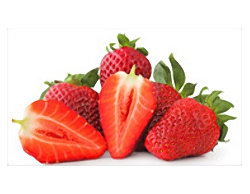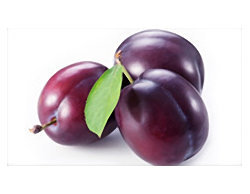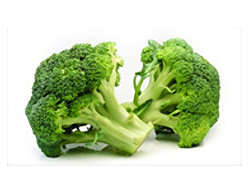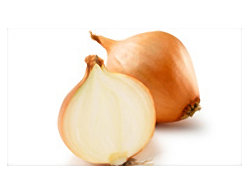- Fruits & Vegetables
- GMOs & Organics?
- Benefits of Grains
- What's a Carb?
- Low Carb Substitutes
- Proteins: Building Blocks
- Protein-Packed Breakfasts
- Meats: Keep it Lean
- Dairy Health Benefits
- Importance of Vitamin D
- Artificial Sweeteners
- Eating a Healthy Diet
- Fiber Sources & Benefits
- How Much Water?
- Example 2 Day Meal Plan
- Mediterranean Diet Pyramid
- Nutrition Facts Label
- Vitamins & Minerals
- U.S. Dietary Guidelines
fruit and vegetable sources
 |
Fruits and vegetables are an excellent way to get carbohydrates, along with other important nutrients such as vitamins, minerals and water. They're also a wonderful source of fiber, if the skin is intact and when lightly cooked or left raw. |
||||||||||||||||||||||||||||||||||||||||
|
Despite these amazing health benefits, most Americans do not eat enough fruits and vegetables. The general rule is a minimum of five servings per day; seven is heaven and nine is divine! Fresh produce in season provides the best flavor and will cost less. Frozen or canned fruits and vegetables, without added salt or sugar, are also a convenient alternative. Fruits and vegetables are generally canned immediately upon harvest when their nutrient content is at its peak. This preserves their nutritional value. The way vegetables are prepared at home can also affect the nutrient content. Vegetables of any type (fresh, frozen, or canned) that are boiled in large amounts of water for long periods of time lose much of their nutritional value compared with vegetables that are lightly steamed.
Juice as a Fruit or Vegetable Source So while juice is a good source, it's less nutrient-dense than the whole fruit from which it came. For this reason, most of your choices should be whole fruits and vegetables versus juices. In reality, many juices that are available only contain a small percentage of actual fruit juice and are mainly added sugar and water. Be sure to read juice labels carefully!
Dried Fruits and Vegetables Also be careful to select options that have no or low added sugar. Dried fruits are great to have on hand, because they are easy to store and are a good, portable quick snack. Eat the Rainbow – Fruits and Vegetables to Try
|
|||||||||||||||||||||||||||||||||||||||||
H-E-B Health Care Services Notice of Privacy Practice | Texas State Board of Pharmacy | How to Dispose of Unused Medicines




